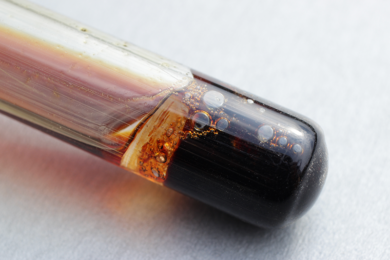As prices and demand rise and mines close there is once again growing interest in the tin potential of the southwest of England. The Western Daily Press recently reported there are “as many as five mining companies are now competing for the tin in Devon and Cornwall.” This region was the major metal mining area of the world back in the mid-to-late 1880s.
Joff Bullen, President of South West Mining Association, was quoted as saying that tin’s “rising value could spark a major revival. There are now five bona fide companies seriously looking at Cornwall today. Cornwall is in an ideal position. It is well known that there is an international shortage of tin. The world’s existing tin mines are running out of reserves and despite a lot of prospecting, no more tin has been found to fill this shortfall. If we put all these factors into the melting pot, these five companies are looking at Cornwall because Cornwall has known ore reserves.
“We should therefore encourage these companies for what they can bring to the region.”
CEO of Marine Minerals, Mike Proudfoot, expressed confidence that the industry may restart in the near future, “in less than four years there will be a global shortfall in supply at the same time as demand continues to grow. The huge San Raphael reserves in southern Peru, which supplies more than 5% of the world’s tin, will be completely exhausted by 2017.
“Tin for the electronics industry has to come from somewhere and we believe much of it could come from the Cornwall. …the reality this time is that with the global demand for tin currently standing at 300,000 t/y and a substantial shortfall looming in the next three years, it doesn’t take a mathematician to work out that new reserves need to come on stream right now.”
Marine Minerals Ltd (MML) is a Cornish company investigating opportunities for the recovery of minerals from the marine environment, particularly from waste material deposited on the sea bed as a result of Cornwall’s historic tin mining industry. It is planning to use new technology to extract an undersea shelf of tin off the Cornish coast estimated to contain 22 Mt of ore.
Its detailed environmental research work began in April. The £500,000, year-long study will look into a range of issues to help ensure the project meets its stated environmental targets. The finding of the research will go into the Environmental Impact Assessment (EIA) which the company will submit when it makes a licence application, expected to be next year, to undertake the tin recovery work.
MML Director and Commercial Manager, John Sewell, explained: “Our aim is to create a project which recovers the very valuable tin, while making as small an impact as possible. We need to understand in detail these issues – and the findings of these studies now underway will help us design the best process.
“Our scientific researchers will be looking at possible impacts on leisure activities, on marine and coastal plants and animals, on the landscape and geology, as well as air and water. We have said from the beginning that this project can only proceed if the waste tin sitting on the seabed can be recovered in a way which is environmentally and socially practical – these detailed environmental studies are vital to ensure we can meet this ambition.
“We believe this will be the most comprehensive study ever undertaken of this stretch of the North Cornwall Coast.”









